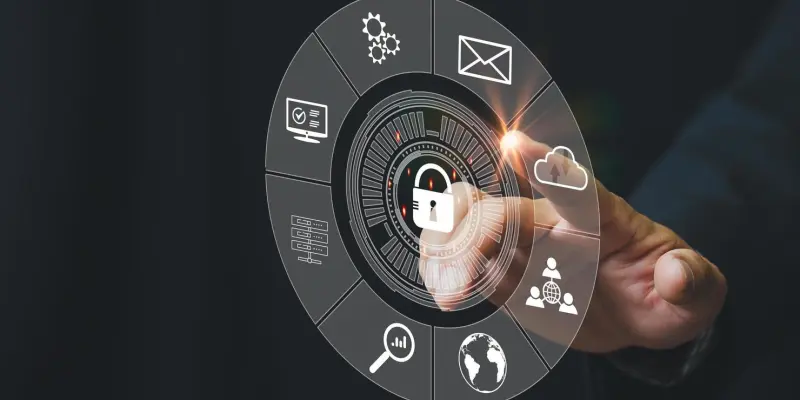In the rapidly evolving landscape of cybersecurity, the newly discovered vulnerability in the OttoKit WordPress plugin has captured the attention of web administrators worldwide. With over 100,000 installations, this plugin, formerly known as SureTriggers, is a vital component for many websites. The vulnerability involves two critical scenarios: CVE-2025-27007, a privilege escalation flaw, and the less severe CVE-2025-3102. At the heart of the issue is the plugin’s create_wp_connection() function, which suffers from serious design flaws, such as inadequate capability checks and insufficient verification of user authentication credentials. The oversight in the plugin’s design allows unauthorized attackers to establish connections, with a heightened risk when application passwords have not been used.
Escalating Risks and Observations
Unauthenticated Access and Potential Exploitation
Wordfence, a leading web security firm, has observed threat actors exploiting this vulnerability by attempting to create administrative accounts on affected sites. The most alarming aspect of this vulnerability is the ability of attackers to escalate their privileges, which could lead to a takeover of the site’s administrative functions. The flaw in handling application passwords presents a major security risk, allowing unauthorized access without proper checks. This scenario represents a significant threat, as it not only compromises website security but also poses a risk to the confidentiality and integrity of user data, potentially leading to widespread site defacements or data breaches.
The exploitation of CVE-2025-3102 and the primary privilege escalation flaw is indicative of attackers opportunistically scanning WordPress installations, searching for security weaknesses. Multiple IP addresses have been identified as participating in these attacks, underscoring the coordinated nature of such efforts. This systematic targeting enforces urgency among WordPress site administrators to address the flaw by updating the plugin promptly. Active exploitation has been ongoing since early May, with the frequency and intensity of attacks increasing rapidly. Swift action is necessary to fortify defenses and secure website infrastructures against these malicious attempts.
Necessity of Immediate Action
Recognizing the severity of this situation, experts emphasize the critical need for users to install version 1.0.83 of the OttoKit plugin to mitigate further security lapses. The latest update offers patches that rectify the problematic coding in the plugin, effectively neutralizing threats associated with the identified vulnerabilities. It is crucial for site administrators to understand the importance of maintaining updated systems as a fundamental practice in cybersecurity defense. Ensuring that all software components are current not only protects against known vulnerabilities but also enhances overall security by incorporating the latest protective measures devised by developers.
Patchstack, an independent security advisory body, has highlighted the root of the vulnerability as a logic error within the authentication process, mainly concerning the wp_authenticate_application_password response. This flaw is worsened by a lack of thorough verification of user-submitted authentication tokens, which could potentially allow unfettered site control. To address this security hole, website operators must enforce stringent measures, including regular audits of site plugins and scrupulous monitoring of network activity for unusual behaviors. The prompt application of updates is vital to safeguard sites from unauthorized intrusion and the possibility of devastating administrative-level breaches.
Safeguarding Websites Against Future Threats
Preparing for New Vulnerabilities
Looking ahead, users are cautioned against complacency, with a need for constant vigilance and preparedness for emerging threats. This recent incident involving the OttoKit plugin serves as a stark reminder of the ever-present risks that come with utilizing third-party software on websites. As cyber threats grow increasingly sophisticated, IT administrators must adopt proactive strategies to manage risks effectively. This involves not just immediate patches and upgrades, but also implementing layered security measures such as firewalls, intrusion detection systems, and regular security assessments to create a robust defense against potential exploits. Understanding the implications of vulnerabilities like those found in OttoKit is essential in fostering a culture of security awareness. Educating users and administrators on best practices, such as the importance of strong passwords and regular updates, significantly contributes to enhancing the resilience of web infrastructures. Going beyond merely reacting to threats, integrating a comprehensive security strategy that anticipates and mitigates risks is crucial. Users should also engage in ongoing education, training, and awareness initiatives to stay informed about the latest cybersecurity trends and emerging threats.
Community and Collaboration in Cybersecurity
Wordfence, a top web security company, has reported threat actors exploiting a vulnerability by trying to create admin accounts on compromised sites. The most concerning aspect is the attackers’ ability to increase their access rights, potentially leading to control over site admin functions. The flaw in application password management poses serious security risks, allowing unauthorized access without adequate safeguards. This dangerous scenario threatens site security, endangering data confidentiality and integrity, possibly resulting in widespread defacements or breaches.
The exploitation of CVE-2025-3102 reflects attackers opportunistically probing WordPress installations for vulnerabilities. Various IP addresses have been linked to these attacks, highlighting their coordinated nature. This systematic focus urges WordPress administrators to urgently update plugins to fix the issue. Since early May, active exploitation has surged, intensifying rapidly. Immediate action is crucial to bolster defenses and safeguard site infrastructures from these malicious onslaughts, ensuring operational security.

